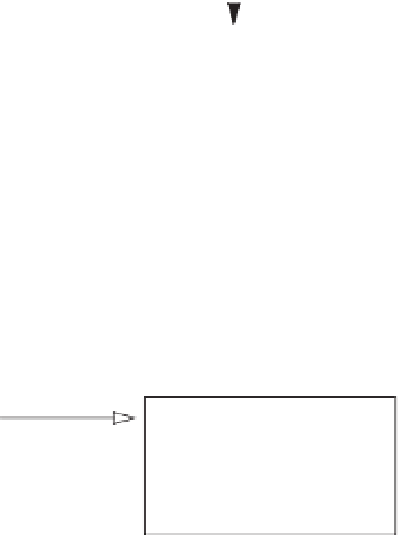Agriculture Reference
In-Depth Information
(a)
Input
Process
Output
(b)
Disturbance
Input
Process
Output
(c)
CO
2
supply
I
nternal tempe
rature
Heat supply
Internal humidity
Process
Vent opening
Internal CO
2
concentration
Fig. 12.1.
Scheme of control systems: (a) input-output system; (b) input-output system with a
disturbance; (c) greenhouse climate control system that details the inputs, outputs and the disturbances
(external climate parameters) (adapted from Bakker
et al
., 1995).
12.1.3
Regulation methods
the parameter. In electronic regulation, the
parameter can be regulated as a function of
the values of one or several parameters (i.e.
night air temperature as a function of the
previous day's radiation).
There are two types of regulation:
'closed loop' or 'open loop'. 'Closed loop'
regulation takes into account only the aver-
age values of the parameter to be regulated.
'Open loop' regulation also considers the
values of other parameters (e.g. to regulate
the air temperature, it also considers the
wind velocity or radiation).
There are two methods of regulation: manual
and automatic. Manual regulation is not in
use for the central boiler heating system and
for fertigation, but it is still used for ventila-
tion, shading and humidification. The disad-
vantages of manual regulation are: (i) that it
is not possible without an operator; (ii) it is
imperfect if there are no measurement instru-
ments; and (iii) manual switches are impre-
cise (e.g. to set the duration of humidification,
or the opening rate of the vents). However,
manual regulation is essential when the cli-
mate conditions are exceptional (e.g. intense
frost); its possible use must be foreseen.
Automatic regulation can be electrome-
chanical or electronic. In electromechanical
regulation, the parameter in question is reg-
ulated as a function of the set point value of
12.1.4
Application to climate
management
Climate management allows for simultane-
ously maintaining the set of climate factors























